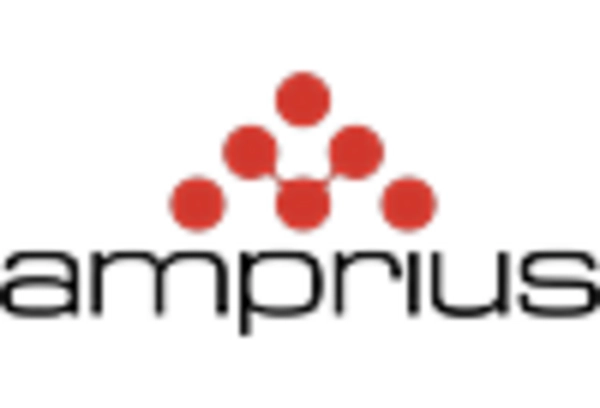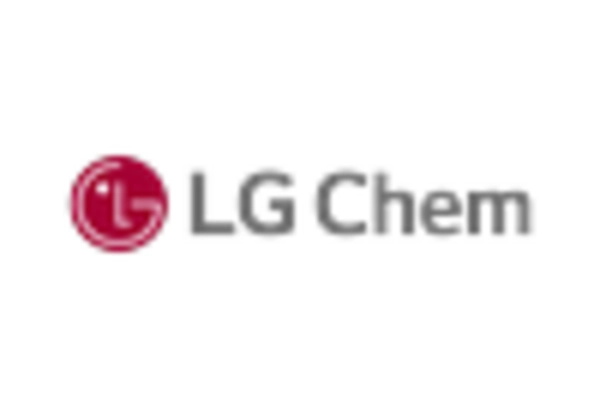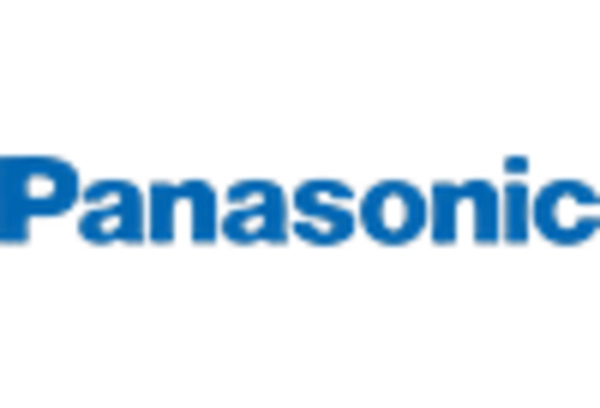Consumer Electronics Market Growth
The growth of the consumer electronics market is a pivotal factor influencing the nanowire battery market. With the proliferation of smart devices, wearables, and portable electronics, there is a heightened demand for batteries that offer longer life and faster charging capabilities. Nanowire batteries, with their superior performance characteristics, are well-positioned to meet these demands. As manufacturers seek to enhance product offerings, the integration of nanowire technology into consumer electronics is expected to drive market growth. The consumer electronics sector is projected to contribute significantly to the overall revenue of the nanowire battery market, potentially accounting for over 30% of total sales by 2027.
Rising Investment in Renewable Energy
Investment in renewable energy sources is a significant driver for the nanowire battery market. As the US transitions towards cleaner energy, the need for efficient energy storage solutions becomes paramount. Nanowire batteries offer the potential to store energy generated from renewable sources such as solar and wind, thereby enhancing grid stability and reliability. The market is likely to see increased funding and research initiatives aimed at integrating nanowire technology into renewable energy systems. This trend could lead to a market expansion, with estimates suggesting a potential market size increase to over $5 billion by 2030.
Environmental Sustainability Initiatives
The increasing focus on environmental sustainability is driving the nanowire battery market forward. As industries and consumers alike seek greener alternatives, the demand for batteries that minimize environmental impact is rising. Nanowire batteries, which can be produced using less toxic materials and have a longer lifecycle, align well with these sustainability goals. The market is projected to grow as companies invest in cleaner production methods and consumers become more environmentally conscious. In the US, the demand for sustainable energy solutions is expected to propel the nanowire battery market, with potential growth rates of 15-20% annually over the next few years..
Technological Innovations in Energy Storage
The nanowire battery market is experiencing a surge in technological innovations that enhance energy storage capabilities. These advancements, particularly in nanotechnology, allow for batteries that are lighter, more efficient, and possess higher energy densities. For instance, nanowire batteries can potentially achieve energy densities exceeding 1,000 Wh/kg, which is significantly higher than traditional lithium-ion batteries. This improvement in performance is crucial for various applications, including consumer electronics and electric vehicles. As the demand for efficient energy storage solutions grows, the nanowire battery market is likely to benefit from these innovations, establishing itself as a key player in the energy storage sector..
Government Incentives for Advanced Battery Technologies
Government incentives aimed at promoting advanced battery technologies are playing a crucial role in the development of the nanowire battery market. Various federal and state programs are designed to support research and development in energy storage technologies, including nanowire batteries. These initiatives not only provide funding but also create a favorable regulatory environment for innovation. As a result, companies are more likely to invest in nanowire technology, leading to advancements that could enhance performance and reduce costs. The impact of these incentives is expected to be substantial, potentially increasing market participation and driving growth in the nanowire battery market.
















Leave a Comment